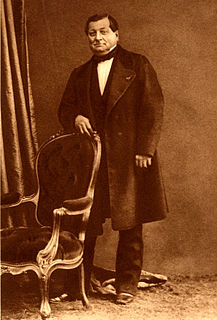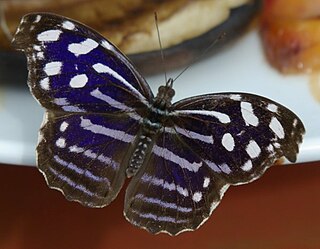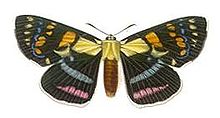
Danainae is a subfamily of the family Nymphalidae, the brush-footed butterflies. It includes the Daniadae, or milkweed butterflies, who lay their eggs on various milkweeds on which their larvae (caterpillars) feed, as well as the clearwing butterflies (Ithomiini), and the tellervini.

The Noctuidae, commonly known as owlet moths, cutworms or armyworms, are the most controversial family in the superfamily Noctuoidea because many of the clades are constantly changing, along with the other families of the Noctuoidea. It was considered the largest family in Lepidoptera for a long time, but after regrouping Lymantriinae, Catocalinae and Calpinae within the family Erebidae, the latter holds this title now. Currently, Noctuidae is the second largest family in Noctuoidea, with about 1,089 genera and 11,772 species. However, this classification is still contingent, as more changes continue to appear between Noctuidae and Erebidae.

Jean Baptiste Alphonse Déchauffour de Boisduval was a French lepidopterist, botanist, and physician.

Noctuoidea is the superfamily of noctuid or "owlet" moths, and has more than 70,000 described species, the largest number of for any Lepidopteran superfamily. Its classification has not yet reached a satisfactory or stable state. Since the end of the 20th century, increasing availability of molecular phylogenetic data for this hugely successful radiation has led to several competing proposals for a taxonomic arrangement that correctly represents the relationships between the major lineages.

Parnara naso, the African straight or straight swift, is a skipper butterfly belonging to the family Hesperiidae. It is found on Mauritius, Réunion and Madagascar. The habitat consists of forest margins and anthropogenic environments.

Biblidinae is a subfamily of nymphalid butterflies that includes the tropical brushfoots. This subfamily was sometimes merged within the Limenitidinae, but they are now recognized as quite distinct lineages. In older literature, this subfamily is sometimes called Eurytelinae.

The Danaini are a tribe of brush-footed butterflies. Their type genus Danaus contains the well-known monarch butterfly and is also the type genus of the tribe's subfamily, the milkweed butterflies (Danainae).

The Calpinae are a subfamily of moths in the family Erebidae described by Jean Baptiste Boisduval in 1840. This subfamily includes many species of moths that have a pointed and barbed proboscis adapted to piercing the skins of fruit to feed on juice, and in the case of the several Calyptra species of vampire moths, to piercing the skins of mammals to feed on blood. The subfamily contains some large moths with wingspans longer than 5 cm (2 in).
Acyclania is a genus of moths in the family Noctuidae first described by Paul Dognin in 1911. It was historically misclassified on multiple occasions, but in 2010 was determined to belong to the subfamily Agaristinae.

Euchromia is a genus of moths in the subfamily Arctiinae. The genus was erected by Jacob Hübner in 1819.

The Libytheinae are a nymphalid subfamily known as snout butterflies, containing two valid genera and about ten species: six in Libythea and four in Libytheana. The common name refers to the thick labial palps (pedipalps) that look like a "snout" in this subfamily. In older literature, this group was recognized as the family Libytheidae. They are medium-sized and typically a drab brown. The front legs are reduced in length and the ventral hindwings are cryptically colored to help them blend in with their surroundings. While at rest, the members of this subfamily keep their wings tightly closed to resemble dead leaves.

Condicinae is a subfamily of moths in the family Noctuidae. The subfamily was erected by Robert W. Poole in 1995.

Notophyson is a genus of moths in the subfamily Arctiinae erected by Jean Baptiste Boisduval in 1870.
Chlanidophora is a genus of moths of the family Noctuidae; it was historically misclassified, but in 2010 was determined to belong to the subfamily Agaristinae.

Belenois, commonly called the caper whites, is a genus of butterflies of the subfamily Pierini in the family Pieridae that are found in mainly in Africa and south-west Asia.
Euchromia madagascariensis is a moth of the subfamily Arctiinae. It was described by Jean Baptiste Boisduval in 1833. It is found in Madagascar and South Africa.
Thyrosticta minuta is a moth in the subfamily Arctiinae. It was described by Jean Baptiste Boisduval in 1833. It is found in Madagascar.













